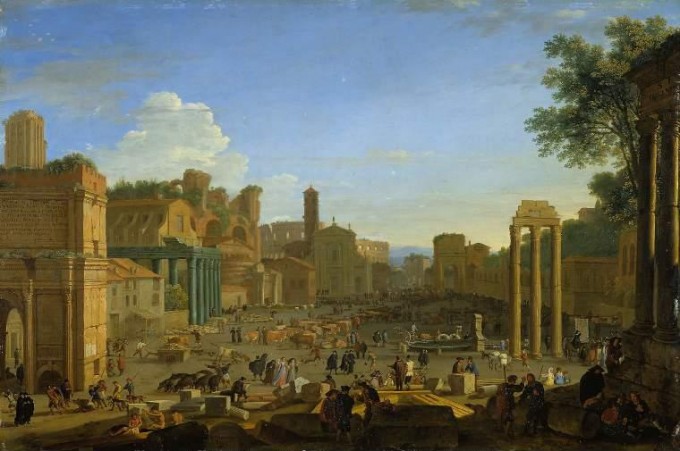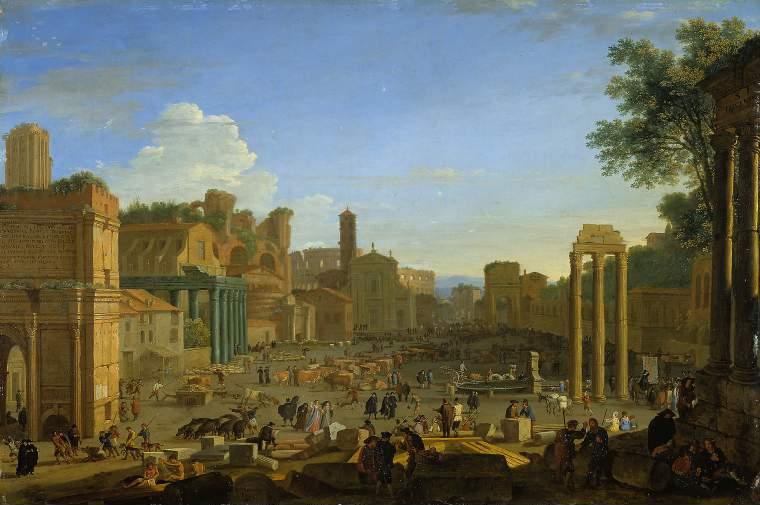The Disposal of Human Waste: A comparison between Ancient Rome and Medieval London
By Craig Taylor
Past Imperfect, Vol.11 (2005)

Abstract: The disposal of sewage is a luxury many societies generally take for granted. It is an aspect of ancient life often ignored and it is the purpose of this paper to recognize and understand how sewage was collected and disposed of in particular cases. This essay examines the waste disposal options used in Ancient Rome and Medieval London, two cities that dealt with sewage in different ways. By recognizing and understanding how these societies treated their human waste, a fair assessment can be made about whether or not the methods applied could be deemed suitable to meet a high or acceptable standard of health for its citizens. This paper argues that Ancient Rome and Medieval London were more concerned with alleviating the filthy sight and obnoxious odor caused by human waste than with addressing public health issues.
Introduction: Before the introduction of modem methods of sewage disposal sanitation was a major problem for all sedentary cultures. The improper treatment of human waste could lead to disease, foul odors and a generally unpleasant environment. Therefore all shared a common need to create a system for the proper disposal of human waste. Although the effects of human waste on health were noted in the past, this was not the number one priority for cities. The major problem that cities desired to alleviate was the filthy sight and obnoxious odor that emanated from human waste. If this nuisance was corrected then the method of disposal was considered appropriate. The aim here is to offer a comparison between two of the largest historical cities known to have had major disposal problems and for which relatively good evidence is available: Imperial Rome and Medieval London. This study will attest that the concern regarding the sight and odor of human waste was the primary factor in determining its method of disposal. Interest in public health was not a major concern in Rome, and in Medieval London it was recognized as an important issue mainly after the Black Death in 1349; even then the attempts to address this issue were not strictly enforced.


 For purposes of comparison a set of criteria suitable enough to apply to ancient cities will be given. Many scholars, such as J. Salvato, have created criteria suitable for judging the efficacy of sewage disposal in modem urban contexts. However, these criteria would be unfairly applied to cities that did not have the benefits of the industrial revolution. The criteria that will be used to judge the effectiveness of human waste disposal are derived from the notion that any person using common sense would desire these requirements for their environment. Human waste is satisfactorily disposed of when 1) it will not contaminate any drinking water supply; 2) it will not give rise to a nuisance due to odor or unsightly appearance; 3) it will not pollute or contaminate the waters of any bathing beach, or stream used for public, domestic water supply, or recreational purposes; 4) there will be adequate public facilities available for its disposal; and 5) its removal will be provided by services from the city and with little inconvenience for the individual. These standards are not nearly as rigorous as the criteria applied today towards the disposal of human waste, but these points are still important concerns for all cities past and present. Some of these criteria were more easily met than others and one thing to note will be which criteria were most important and which proved problematic.
For purposes of comparison a set of criteria suitable enough to apply to ancient cities will be given. Many scholars, such as J. Salvato, have created criteria suitable for judging the efficacy of sewage disposal in modem urban contexts. However, these criteria would be unfairly applied to cities that did not have the benefits of the industrial revolution. The criteria that will be used to judge the effectiveness of human waste disposal are derived from the notion that any person using common sense would desire these requirements for their environment. Human waste is satisfactorily disposed of when 1) it will not contaminate any drinking water supply; 2) it will not give rise to a nuisance due to odor or unsightly appearance; 3) it will not pollute or contaminate the waters of any bathing beach, or stream used for public, domestic water supply, or recreational purposes; 4) there will be adequate public facilities available for its disposal; and 5) its removal will be provided by services from the city and with little inconvenience for the individual. These standards are not nearly as rigorous as the criteria applied today towards the disposal of human waste, but these points are still important concerns for all cities past and present. Some of these criteria were more easily met than others and one thing to note will be which criteria were most important and which proved problematic.
Click here to read this article from the University of Alberta
Sponsored Content


The Disposal of Human Waste: A comparison between Ancient Rome and Medieval London
By Craig Taylor
Past Imperfect, Vol.11 (2005)
Abstract: The disposal of sewage is a luxury many societies generally take for granted. It is an aspect of ancient life often ignored and it is the purpose of this paper to recognize and understand how sewage was collected and disposed of in particular cases. This essay examines the waste disposal options used in Ancient Rome and Medieval London, two cities that dealt with sewage in different ways. By recognizing and understanding how these societies treated their human waste, a fair assessment can be made about whether or not the methods applied could be deemed suitable to meet a high or acceptable standard of health for its citizens. This paper argues that Ancient Rome and Medieval London were more concerned with alleviating the filthy sight and obnoxious odor caused by human waste than with addressing public health issues.
Introduction: Before the introduction of modem methods of sewage disposal sanitation was a major problem for all sedentary cultures. The improper treatment of human waste could lead to disease, foul odors and a generally unpleasant environment. Therefore all shared a common need to create a system for the proper disposal of human waste. Although the effects of human waste on health were noted in the past, this was not the number one priority for cities. The major problem that cities desired to alleviate was the filthy sight and obnoxious odor that emanated from human waste. If this nuisance was corrected then the method of disposal was considered appropriate. The aim here is to offer a comparison between two of the largest historical cities known to have had major disposal problems and for which relatively good evidence is available: Imperial Rome and Medieval London. This study will attest that the concern regarding the sight and odor of human waste was the primary factor in determining its method of disposal. Interest in public health was not a major concern in Rome, and in Medieval London it was recognized as an important issue mainly after the Black Death in 1349; even then the attempts to address this issue were not strictly enforced.
Click here to read this article from the University of Alberta
Sponsored Content